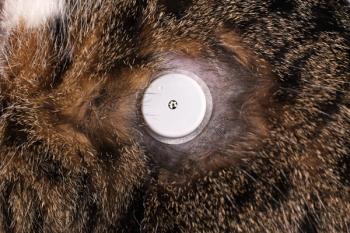
Hypertriglyceridemia in epileptic dogs
Hypertriglyceridemia refers to a fasting plasma triglyceride measurement that is increased, typically above the 95th percentile for age and animal species. Hypertriglyceridemia can be divided into primary and secondary forms.
Hypertriglyceridemia refers to a fasting plasma triglyceride measurement that is increased, typically above the 95th percentile for age and animal species. Hypertriglyceridemia can be divided into primary and secondary forms. A genetic background seems to predispose dogs to hypertryglyceridemia in the primary form, whereas no genetic susceptibility component can be identified in dogs with the secondary form.
Secondary causes of hypertryglyceridemia include obesity, pancreatitis, diabetes mellitus with insulin resistance, nephrotic syndrome, hyperadrenocorticism, hypothyroidism, certain medications (e.g., long-term glucocorticosteroid administration), high-fat or carbohydrate diets and cholestasis (Table 1).
Table 1: Selected causes of hypertriglyceridemia
In a recent paper by Elissa K. Klugler et al., titled "Serum triglyceride concentration in dogs with epilepsy treated with phenobarbital or with phenobarbital and bromide," published in JAVMA (Vol. 233, No. 8, Oct. 15, 2008), the authors note that some dogs treated long-term with phenobarbital or with phenobarbital and bromide may develop hypertryglyceridemia.
Many breeds were represented in this study. The most common breeds treated with these drugs that developed hypertriglyceridemia were the Labrador Retriever, Golden Retriever, Maltese and Poodle. Fasting serum triglyceride concentration was higher in dogs treated with phenobarbital and bromide than in control dogs. Serum triglycerides did not differ significantly between the group of dogs treated with phenobarbital alone compared to phenobarbital and bromide.
The authors suspect that clearance of chylomicrons from the circulation was apparently delayed in these epileptic dogs. In rabbits and guinea pigs, phenobarbital increased hepatic, very low-density lipoprotein (VLDL) production secondary to microsomal enzyme induction, which may result in high serum triglyceride concentrations.
A paper published by John E. Bauer in 2004 noted that excess of VLDL may overload lipoprotein lipase (LPL) receptors, causing an accumulation of triglyceride-rich chylomicrons in the blood (Lipoprotein-mediated transport of dietary and synthesized lipids and lipid abnormalities of dogs and cats. JAVMA, Vol. 224, No. 5, March 1, 668-675). It is suspected that phenobarbital also may decrease LPL activity, resulting in hypertryglyceridemia.
In dogs, pancreatitis is a possible complication of long-term treatment with phenobarbital and bromide or with bromide alone. In the study by Kugler et al., 16 percent of dogs with epilepsy had a history of pancreatitis and 27 percent had high canine-specific pancreatic lipase immunoreactivity (cPLI) values, supporting pancreatic inflammation.
In Kugler's paper, dogs treated with phenobarbital had low serum total thyroxine concentrations and high serum alkaline phosphatase activities, but did not have any clinical signs or repeatable biochemical abnormalities consistent with hypothyroidism or hyperadreno-corticism. Hypertriglyceridemia in the dogs reported in this paper was apparently not associated with one or both of these endocrinopathies.
The reader should note that so-called atypical hyperadrenocorticism, with elevated blood levels of androstenedione, estradiol, progesterone, 17-OH progesterone or testosterone, was not addressed in this study. The clinician should consider an ACTH stimulation adrenal panel test (available through the University of Tennessee, College of Veterinary Medicine) to rule out this syndrome in cases with hypertriglyceridemia.
In conclusion, hypertryglyceridemia is common in dogs treated long-term with phenobarbital alone or with phenobarbital and bromide. Elevated blood triglyceride level may predispose to pancreatitis. Therefore, regular assays of the serum triglyceride level and a low-fat diet should be considered in dogs treated with phenobarbital alone or combined with bromide.
Dr. Bichsel completed his residency in neurology at the University of Georgia in 1984. He is a diplomate of the American College of Veterinary Internal Medicine and works at the Animal Emergency and Referral Center in Ft. Pierce, Fla.
Dr. Lyman is a graduate of The Ohio State University College of Veterinary Medicine. He completed a formal internship at the Animal Medical Center in New York City. Lyman is a co-author of chapters in the 2000 editions of Kirk's Current Veterinary Therapy XIII and Quick Reference to Veterinary Medicine
Newsletter
From exam room tips to practice management insights, get trusted veterinary news delivered straight to your inbox—subscribe to dvm360.





